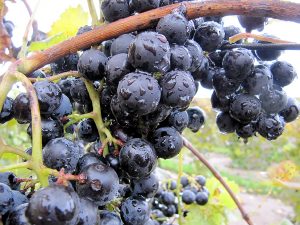After suffering desiccating drought for years, California found itself awash in alluvian floods in 2023. The state that produces almost 90 percent of U.S. wine is almost 170 percent ahead of normal precipitation.
So, what is the impact of deluges in our nation’s most important wine region? As you can imagine, there is good and bad.
The bad: The fires of previous years meant there was less ground cover to absorb moisture, so there are landslides, downed trees, rivers swollen with water and debris, vineyards flooded for extended periods.
The good: Reservoirs and underground water were replenished. Many vineyard operators anticipated the future and worked at erosion control by planting cover crops and building water diversion systems to capture water. La Crema winery, for example, so far has captured more than 75,000 gallons of rainwater and has a capacity to store up to 200,000 gallons.
The impact on vines largely depends on vine age. Young vines with shallow roots do not fare well in flooded vineyards. Older vines with deeper root systems fare well, and the increase in groundwater bodes well for them in years to come.
The deluges came when vineyards were dormant and most resilient. Vineyards are tough—that’s how you get century-old vines. Freezes and floods don’t have much effect on dormant vines. Mother nature threatens crops when the vines come out of dormancy—bud break. That’s when late freezes, hailstorms and excessive rain can hurt that vintage’s crop. But, even then, tough vines will be back at work next season.
The storms interrupted human’s ability to get into the vineyard for pruning and cleaning up debris. It is difficult to work in mud, water, and torrential rain for both humans and machines. Since many vineyards are reached by dirt roads, there were times when mud and flooded rivers meant vineyards could not be reached.
Amid the hassles, California grape growers overall are pleased, relieved. As one grower put it: “Abundant rain during the dormant season is one of the best things to worry about.” Water supplies are on their way to being restored. Soaking rains wash down salt in the topsoil, refreshing soils. More water in the soil means a later bud break, less irrigation, stronger canopies in the spring.
All in all, growers prayed for rain for years. In 2023, their prayers were answered.
Last round: A grasshopper sits down at a bar. The bartender says, “We have a drink named after you!” The grasshopper replies, “Who in the world names a drink ‘Steve?’” Wine time.


